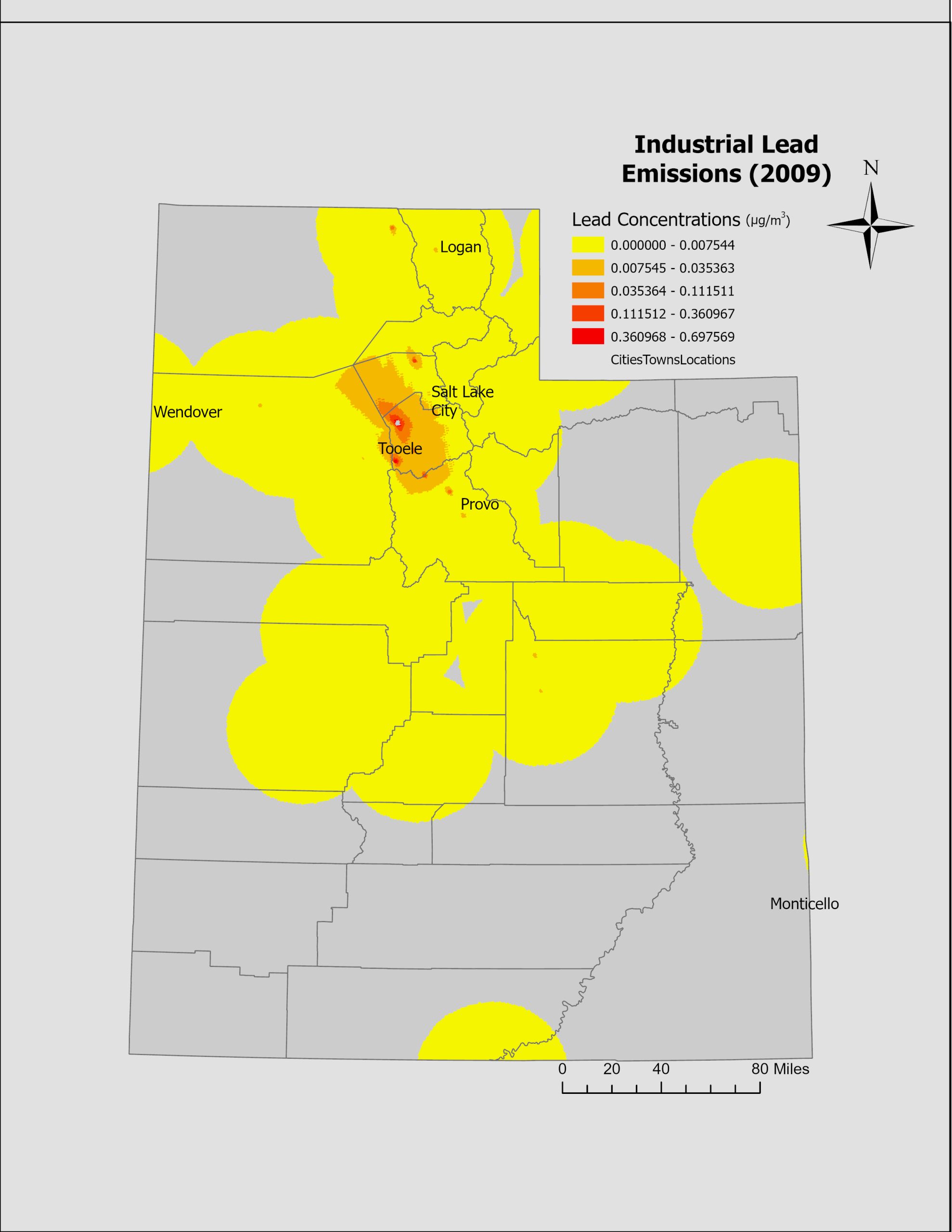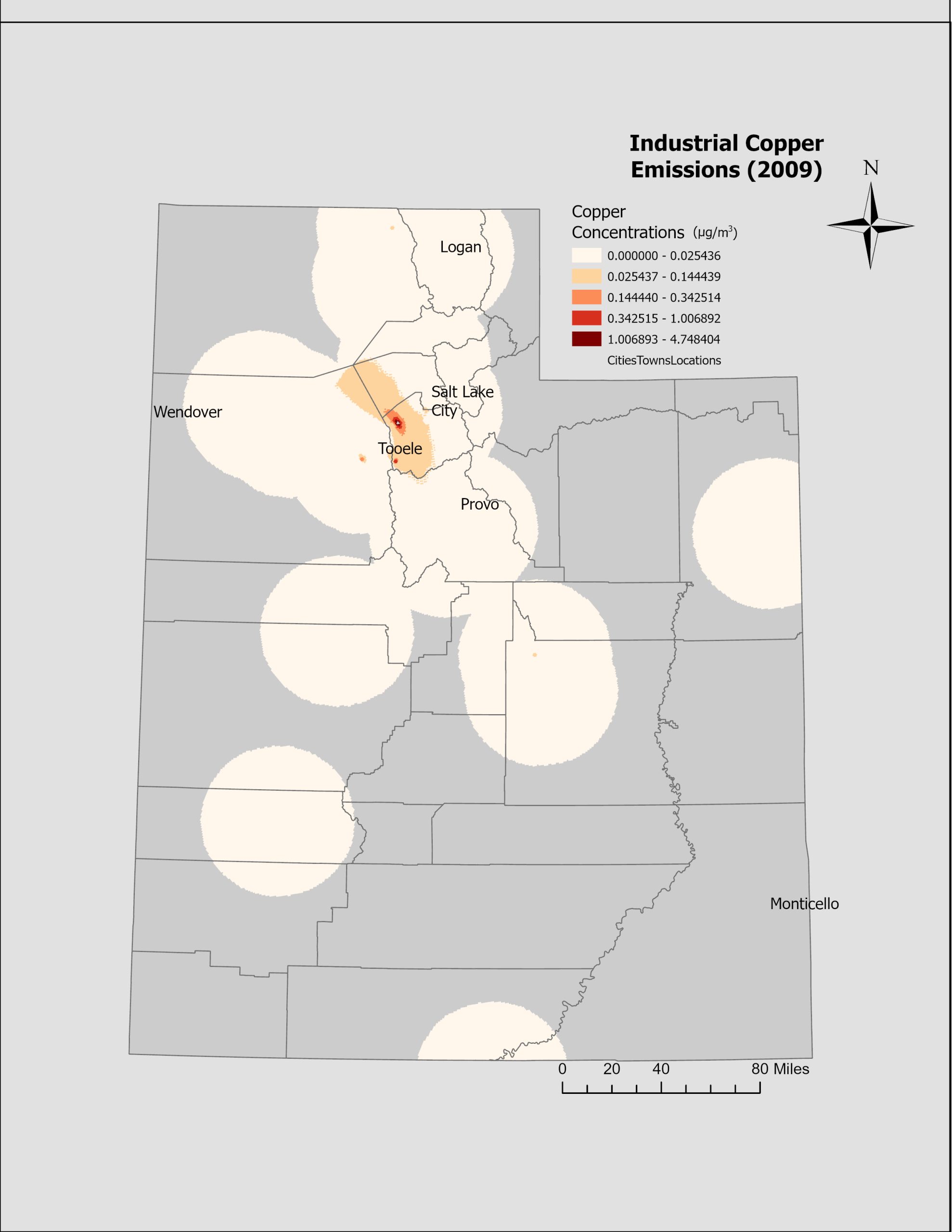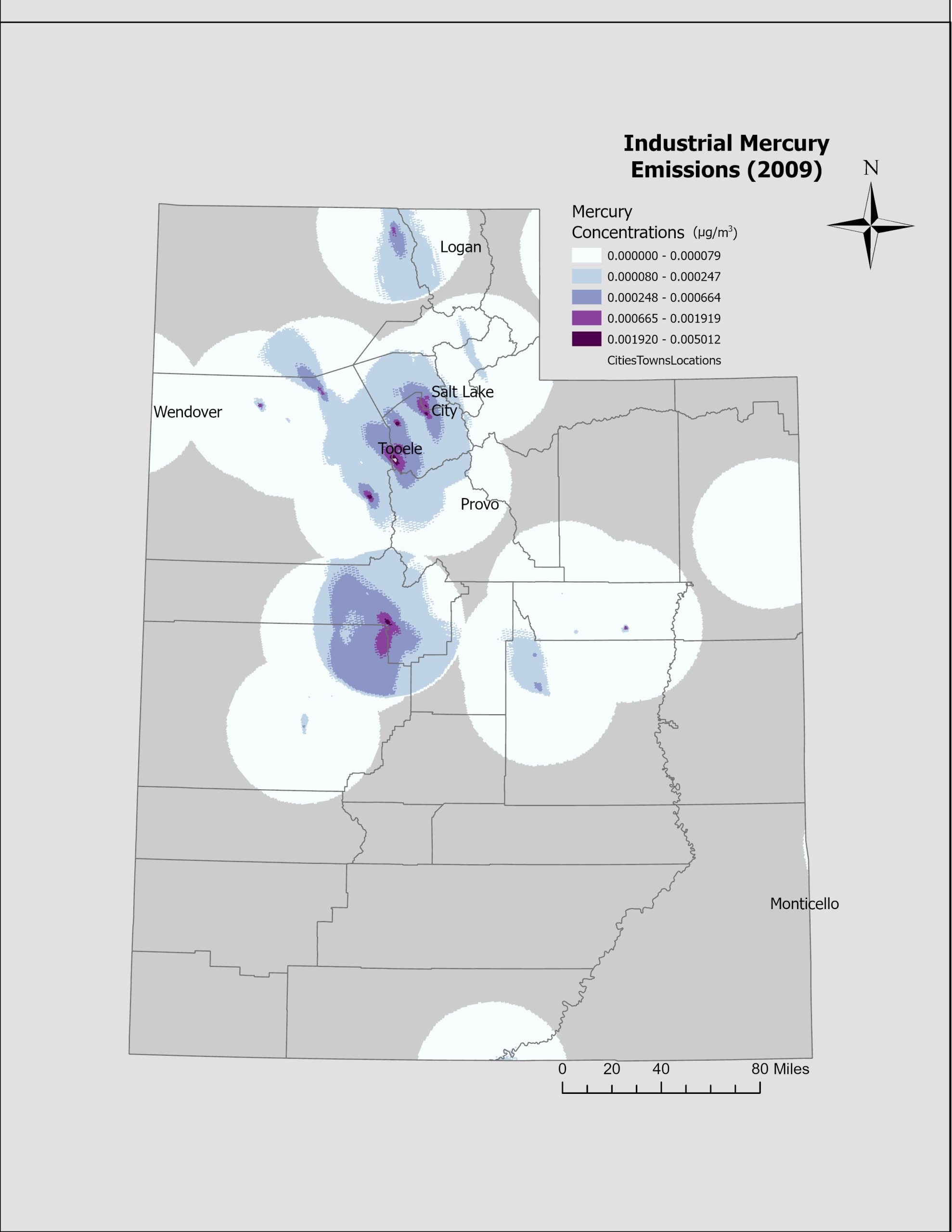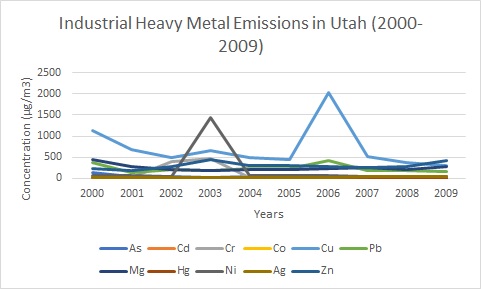College of Social and Behavioral Sciences
97 Using US EPA RSEI Data to Characterize Industrial Heavy Metal Emissions: An application to intellectual disability in Utah
Jacqueline Gomez; Sara Grineski; Timothy W. Collins; Roger Renteria; Kevin Ramos; Joemy Ramsay; and James Vanderslice
Faculty Mentor: Sara Grineski (Sociology, University of Utah)
Research has documented how exposure to heavy metals, e.g., lead, leads to an increased risk of neurodevelopmental disorders like autism spectrum disorder (ASD) and intellectual disability (ID). Our team has demonstrated that birth year exposures to industrial pollution are associated with ID in Utah. ID impacts one percent of the population and has serious implications for people’s intellectual and adaptive functioning. In this project, we use industrial emissions data from the US Environmental Protection Agency’s Risk Screening Environmental Indicators (RSEI) from 2000 through 2009. We focus on those years as this is when the children in our study were born. RSEI data summarize air concentrations of 770 chemicals within 50 kilometers of each reporting facility; these facilities are mandated to report emissions to the Toxics Release Inventory (TRI). TRI tracks the management of toxic chemicals. Here, we focus on eleven heavy metals and their compounds, i.e., lead, manganese, mercury, nickel, silver, zinc, cadmium, cobalt, chromium, copper, and arsenic. This poster shows temporal trends in emissions and spatial distribution of those emissions (Figures 1, 2, 3). Emissions remained constant throughout 2000 through 2009, with the exceptions of nickel and copper having spikes (Figure 4). While RSEI data have many strengths, important limitations include that emissions are self-reported by facilities and only annually, making it impossible to link emissions to birth month. The next step is to examine if specific industrial heavy metal exposures during the birth year increase odds of ID for children with and without ASD relative to neurotypical children. We will also investigate synergies in these exposures and if the child’s sex or mother’s age modifies associations. We will link these RSEI data with birth certificate information from the Utah Population Database. We will next assign heavy metal exposure values to each child based on birth year and maternal residential address using ArcPro and then conduct statistical analyses. Examining these relationships will help us better understand how exposures impact children’s development.




About the authors
name: Jacqueline Gomez
name: Sara Grineski
institution: University of Utah
name: Timothy Collins
institution: University of Utah
name: Roger Renteria
name: Kevin Ramos
name: Joemy Ramsay
name: James Vanderslice
institution: University of Utah

